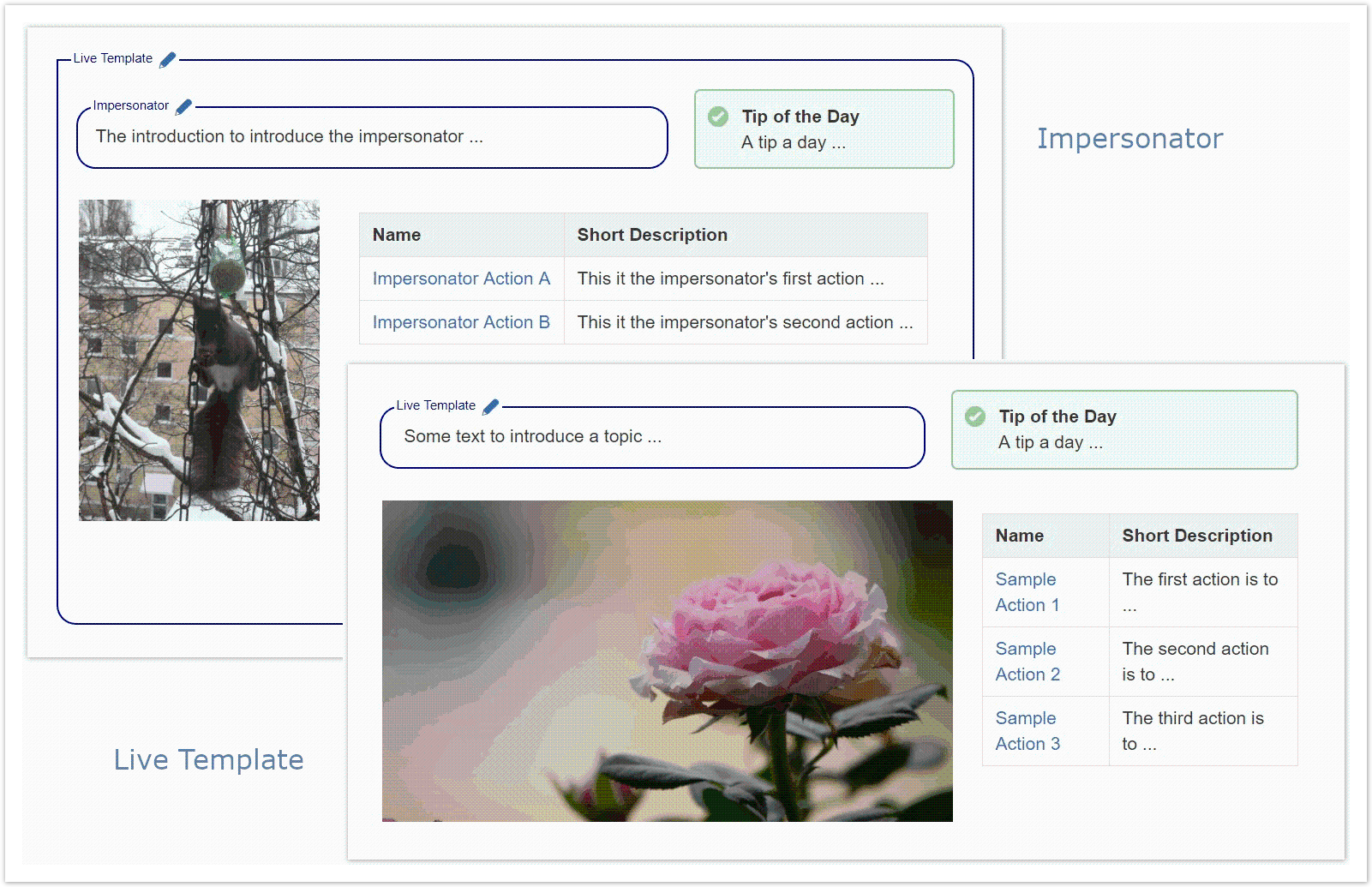Use the structure from a page and render it in the current page's context.
The Impersonator is closely related to transclusion. But instead of transcluding content from another page, the impersonator transcludes only the unrendered content and renders it in its own context. The transcluded, unrendered content is used as a template that is rendered at request time. Therefore it is called live template.

For more information and an example of usage, read the tip Impersonator - using Live Templates!
Resources
More information on this feature.
More Features
List of features of the projectdoc Toolbox for Confluence.
- Deep Links
- With deep links properties from referenced properties can be accessed for rendering.
- Default Locations
- Document types have their default location within a documentation space. These default locations are called 'homepages'. If authors create new documents they can send them to these default locations within a given space. Delegate spaces expand this feature to find the default location in associated spaces.
- Delegate Document
- Delegating documents transclude sections and properties from a delegate document. Information may be overridden.
- Document Types
- Document types allow to guide authors producing information of a given type. They also help readers to find the information they are looking for quickly.
- Dynamic Linking
- A document template that uses query macros enables documents to dynamically render links to a set of related documents. If new documents are added to the system that meet the query criteria, links to these documents are automatically added to the querying document. This feature is also called dynamic lists or automatic linking.
- Enhanced Transclusion
- Transclude more than one self-contained snippet and mark transcluded information for authors. The projectdoc toolbox allows multi-transclusion from one document and even several documents.
- Extensible by Spaces, Templates, and Macros
- Never be limited to the vendor's ideas: Create your own spaces, templates/blueprints/doctypes and macros based on components provided by the projectdoc Toolbox!
- Guided Writing & clutter-free Reading
- Do not clutter the view with non-information sections. Instead help authors writing identical structured content by the use of templates.
- Information Systems Integration
- Via a free extension information from remote information systems may be rendered on a wiki page.
- Remote Control
- The projectdoc Toolbox supports rendering a page controlled by request properties. This way a URL controls the contents of a page.
- Rich Custom Document Metadata
- Authors may add any metadata to a document and use these in their queries. The metadata may be displayed or hidden. This way authors can use metadata target at the reader and metadata used for authoring purpose.
- Single Sourcing
- The projectdoc Toolbox provides doctypes and macros to support teams to modularize their documentation.
- Space Hierarchies
- Organize spaces in hierachies with delegate and search spaces.
- Space Properties
- Properties may be set on space level and are inherited through space hierarchies.
- Variables
- Space and document properties may be used as variables with the projectdoc Toolbox.
- Web API
- To integrate projectdoc documents with remote systems the projectdoc Toolbox provides a REST API. This API is installed separately with a free extension add-on.